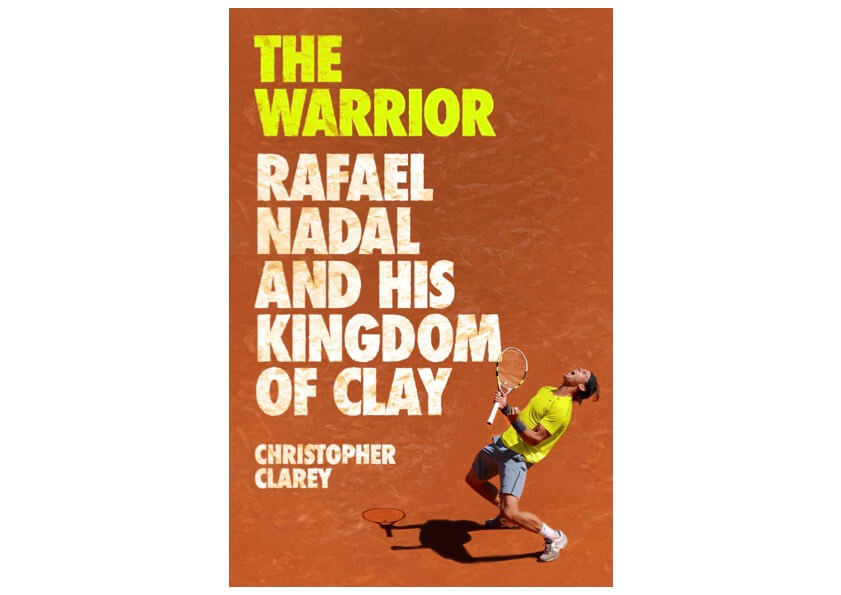
Christopher Clarey, who covered tennis and international sports for 40 years for the International Herald Tribune and the New York Times, wrote what is widely regarded as the definitive book on Roger Federer: “The Master: The Long Run and Beautiful Game of Roger Federer.”
Now he has produced a similarly authoritative book on Federer’s longtime rival and friend, Rafael Nadal: “The Warrior: Rafael Nadal and His Kingdom of Clay.” The book tells the story of both Nadal and clay-court tennis, using the Spanish great’s relationship with Roland Garros, the French Open, as its frame.
Advertisement
In an interview with The Athletic, Clarey explained why he chose this approach for tackling the subject of the 22-time Grand Slam champion, someone he covered for the entirety of his career and, as a Spanish speaker, with whom he was able to communicate in Nadal’s native language.
“Rafa is a lot funnier and wittier and quicker and a little more acid, for sure, when he’s at ease in his own language than he is as the philosophical snippet Rafa from English press conferences over the years,” Clarey said.
An excerpt from Clarey’s book follows the interview, detailing the four French sports heroes without whom Nadal’s Roland Garros legacy could never have existed.
This interview has been edited for length and clarity.

Why did you take this approach to Nadal?
The one thing that really ate at me over the years that I knew I would regret if I didn’t do was a Roland Garros book. That was the one that I had connected to as a very young person. I lived a couple of blocks away. My wife is French. She’s from that area. And that was the one that I really connected with. Wimbledon was the first one that I covered, but I learned French as I was covering Roland Garros. All these things happened there. I really knew from a pretty early age as a journalist that if I didn’t write a book about that at some point, I was going to have a regret about it.
Rafa had done a good autobiography. I wanted to find a way to do something a little more challenging and original for me, and fresh. I don’t want to reduce him to Roland Garros, but this gave me a chance to go at Roland Garros and put them together, because I don’t think there’s anybody else who could be as defined by the dominance of one event than him.
You grew up in America on hard courts. Where did your affinity for clay come from?
Watching on TV as a kid. We didn’t have that much like we do now, but my family was a tennis family and we watched the majors when we could and listened to Bud Collins and his nicknames and all the rest, and the French Open had this mystical, exotic quality. You had to move so differently. I taught tennis for one summer in East Hampton Tennis Club after Williams College to make money for traveling. It was on green clay. By the end, like the last week or two, I could actually slide on the stuff.
Advertisement
And then, when I met my wif,e and I got a chance to go to Roland Garros and cover it, I just loved the scrape, the sound, the light. In Paris, at Roland Garros, at night … That sort of end-of-day light across the clay, the colors … I think it was just the fact that it was so different from what I had grown up with as a youngster that made it so appealing.
There used to be the argument that the French Open doesn’t produce the all-time greats in the same way that the other Slams do.
It is a fair point because the game was played primarily on grass initially, then on quicker surfaces through the hard-court era. The speed of the game and the skill sets hadn’t been as homogenized at that point, so there really were big deltas in terms of what somebody was able to do on one surface versus another. What I didn’t grasp until later on, and actually it came from talking to Americans and adopted Americans like Patrick McEnroe and Jose Higueras, was what an incredible tool clay-court tennis is for learning the game. If you can get the speeds right and the technique a little bit more compact, it can translate to everything because of the angles that you have to create and the geometry you have to understand.
For a long time, I think the really underappreciated thing about Rafa was how great a tennis mathematician and geometrist he was. I think people thought of him as a slugging warrior type — look at my title of the book — somebody who was more grit than genius. I think that’s selling him short.
Did you get much pushback from his people that you were portraying him as a clay-court specialist?
There’s no doubt that what he is going to be remembered 20 years from now is his 14 Roland Garros titles. In your memory, a red-clay backdrop. Now, in no way does that sell anything else that he did short. In some ways, it magnifies the things he was able to do elsewhere. Even if he had never played on clay, he still would have had a double-times-two Hall of Fame career. Eight other majors put him in John McEnroe and Andre Agassi territory, and no one’s complaining about them.
Advertisement
His camp was afraid it was going to diminish the overall body of work. I really don’t think it does that. He was chasing other things from a very early age. But their career-long focus was to make Rafa a global champion, an all-court champion. They wanted to take Rafa big and broad, and their ticket to that was to go beyond clay.
Was there a point between his first and 14th titles when you thought someone was going to take him out?
In 2015, 2016, when Novak Djokovic finally solved him there and Rafa was going through his tennis existential crisis, the anxiety attacks on court. But that led to the big comeback year of 2017. I always knew he’d be competitive on clay, but I thought Novak had solved it and Novak had taken over the game. In tennis, when you’re king of the hill and somebody deposes you, you’re never quite the same again. Novak had all the tools to make his life miserable on every surface.
What was the most surprising thing you heard as you were researching and writing this?
How much people in Mallorca were accessible to him. These were guys who were more on the expert level than probably Toni Nadal was, who coached juniors nationally in Spain. Early on, Rafa would just play it at light speed. Bounce the ball, serve. Ball, serve, with all that life-force and vitality that he has. They felt like he was burning himself out that way, so they gave him his routines to slow him down. If they had let him just go with his natural thing, kind of like Federer, his natural original state of just madness and self-immolation on the court … That’s quite a different thing than what we saw.
I didn’t realize quite how much of a village had raised him tennis-wise. Toni is the main guy; never take that away from him. But how does a guy like that really raise a champion to the level of Nadal? Well, the fact is, he didn’t do it really alone. He had Carlos Costa, who had been top 10 in the world. He was very much early on in the process as the agent, but also knew a heck of a lot about tennis. And then he also had Carlos Moya, who was in many ways just as essential.
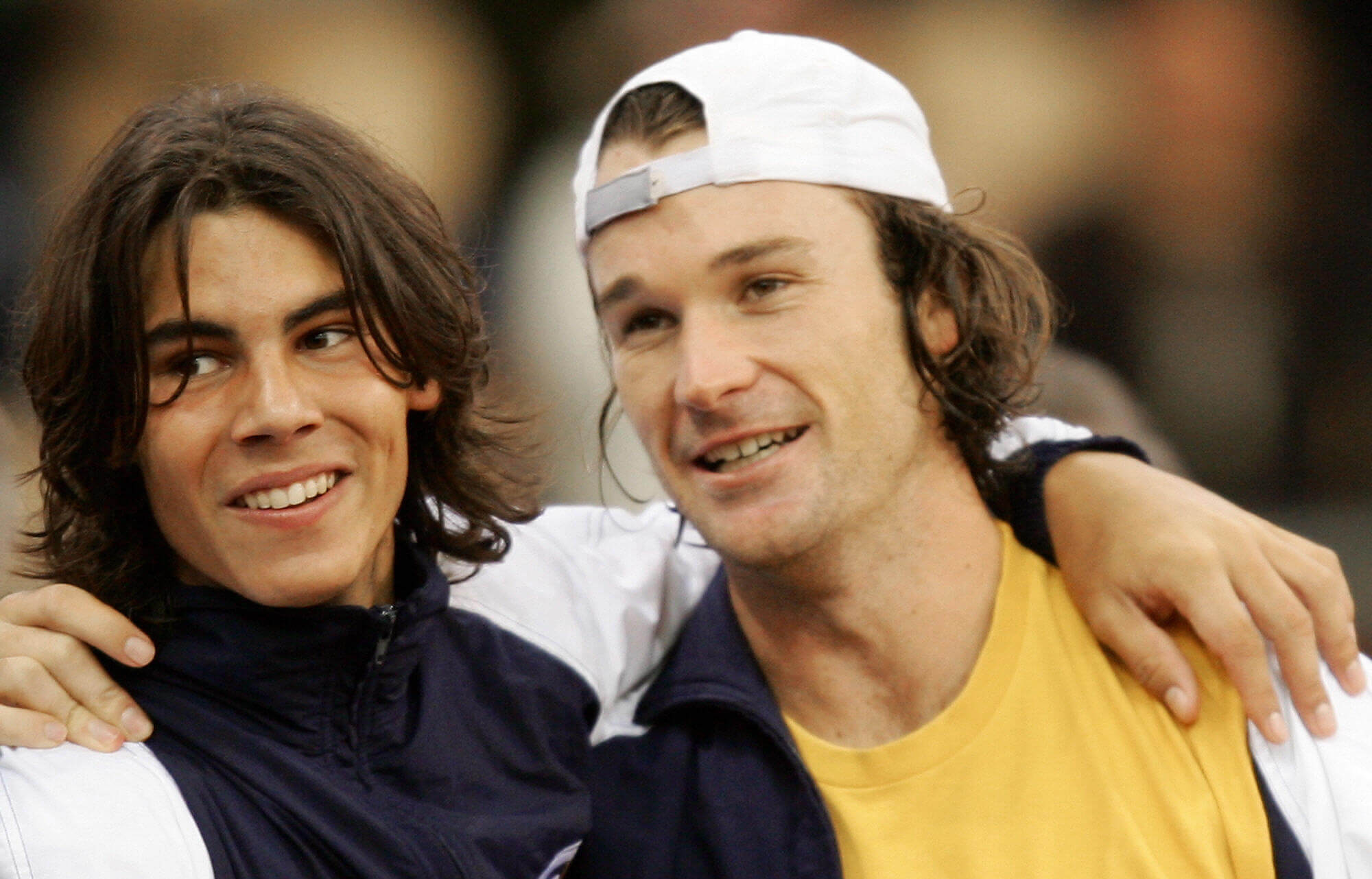
Nadal with Moya at the 2004 Davis Cup. Moya would later become a key figure on Nadal’s team. (Christophe Simon / AFP via Getty Images)
What does a hyper-competitive person like Nadal do in retirement to fill that need to compete?
That competitive streak does not exclude having the ability to have fun. Nadal has that duality in him, but anybody who knows him will talk about that vitality and that intensity of energy during the day. I think both he and Federer were hyperactive children, just overflowing energy that needed to come out and was channeled into sport.
He set up so many things with business, with the academy structure. He’s definitely focused on that through his family and Toni’s influence, but it’s spreading and he’s got a lot of business deals going on. And I definitely see him trying to compete recreationally in golf.
Maybe it will be more of “you’ll come to me,” but I wouldn’t be surprised to see him become part of a coaching team for a top Spanish player, maybe even Carlos Alcaraz down the road. They have a big connection.
Advertisement
These guys, Nadal and Federer, will stay engaged. They know that they’re tied together and they know that part of the business model is a Big Three. We’ll see what happens with Djokovic when he retires, whether they integrate him into their club. But Nadal and Federer will do things. They’ve built these empires.
The following excerpt introduces four French tennis professionals from almost a century ago, who had an indelible impact on Nadal’s tennis legacy and that of the French Open. The full chapter, ‘The Founders,’ outlines their shared lives from the tennis court to the fields of battle, and details how their collective success resonated throughout the tennis world and through history.
Roland Garros, the dusty French domain that Rafael Nadal would rule for nearly twenty years, almost certainly would not have existed without four men he never met who played their best tennis nearly a century ago. They were known, predictably for French sports heroes, as the Musketeers, even if the first to nickname them was an American rival who had seen a movie based on Frenchman Alexandre Dumas’s work.
All for one and one for all (unless they were playing each other), les Mousquetaires — Jean Borotra, Jacques Brugnon, Henri Cochet, and René Lacoste — changed the history of tennis and of Parisian landmarks, creating the need, with their resounding success, for a tennis stadium worthy of staging what was in 1928 one of the leading events in global sport: the Davis Cup.
“The Musketeers of Alexandre Dumas were ready to die for each other,” Borotra once said. “Luckily, we didn’t have to go that far, but there was a mutual devotion between us of a higher order, every bit as profound.”
Tennis would have continued to grow in France without their breakthrough, but the prime and leafy location where Roland‑Garros Stadium was constructed would very likely have been developed differently without the Davis Cup victory in 1927 against “Big” Bill Tilden and the Americans. Other French organizations and sports federations coveted the site, whose lease had just expired, but tennis was now a national priority in France.
The Musketeers were riding on the momentum and enormous interest that had been generated by their compatriot Suzanne Lenglen. She was one of the transcendent athletes and personalities of the 1920s, and she reveled in it, breaking social codes with her knee‑length tennis outfits that were risqué for the time. She dominated the game and the courtside conversations with her balletic shot making full of leaps and flourishes, losing just one singles match between 1919 and 1926.
Advertisement
She inspired not only sportswriters but songwriters: “Ah! Suzanne!” was a hit in Paris in 1925, its title drawn from what spectators would exclaim as they watched her at play. Lenglen was also a muse for the Musketeers. She convinced Brugnon, the oldest of the four, to postpone his law studies and focus on tennis, and partnered successfully with him, Borotra, and Cochet in mixed doubles. She even offered tactical and technical advice, recommending that Lacoste lower the grip on his ground strokes and shorten his preparation time. But she, unlike Lacoste, was no poker‑faced technician. La Divine, as she was known in France, was a flamboyant attacking player, and Borotra, who played with the same brio and spontaneity, was mesmerized when he first saw Lenglen play in 1919.
“She had adopted what was traditionally the game of a man, with the volleys and an overhead of great power,” Borotra told me. “She had remarkable reflexes. She had an incredible game. There was never another one like her. She was also an intelligent woman, a great credit to France.”
But her business decision to turn professional in 1926 — she was the first female tennis player to do so — did not leave a void for long in French tennis because the Musketeers were establishing themselves as the preeminent force in the men’s game.
They had sobriquets of their own. The dashing and sometimes maddening Borotra, who was born in the French Basque country in Biarritz and was fond of wearing a blue beret on court, was the Bounding Basque. Cochet, a diminutive and seemingly nonchalant shot maker extraordinaire from Lyon, was the Magician. Brugnon, primarily a doubles specialist in an age when doubles mattered more, was Toto. Lacoste, with his cunning and relentless game, was the Crocodile.

Jacques Brugnon, Henri Cochet, Rene Lacoste, and Jean Borotra. The group, known as the four Musketeers, won the Davis Cup six times between 1927 and 1932. (AFP via Getty Images)
I never got the chance to interview Cochet or Brugnon before their deaths. But after I moved to France, I did spend time in the early 1990s with Lacoste and Borotra when I was on assignment for the International Herald Tribune. Given their advanced ages — Lacoste was 88, Borotra was 94 — I was well aware of how precious an opportunity this was. I twice visited Lacoste and his wife, Simone, at their villa in the Basque country near Saint Jean de Luz on the Chantaco golf course, which Simone’s father had built in honor of Simone’s golfing achievements.
Lacoste, at this stage, was frail, restricted in his movements because of a heart condition and reliant on a motorized chair to mount and descend the house’s sweeping central staircase. “Doctor’s orders,” he explained to me. “If you were a pretty woman, you could ride up on my knees, but you are not.”
I met Borotra briefly at the 1991 Davis Cup final in Lyon, where he was doused with champagne after a French team led by Guy Forget, Henri Leconte, and charismatic captain Yannick Noah ended a 59‑year Davis Cup drought that dated to the Musketeers by upsetting another powerhouse United States squad that this time included a young Pete Sampras and Andre Agassi.
Advertisement
In 1993, a year before Borotra died, he granted me an audience (that was how it felt) in his elegant Haussmannian apartment on Avenue Foch in Paris. In a dark business suit and with his hair slicked back over his high forehead, Borotra was still full of vigor as he took me on a train‑to‑catch tour of his drawing room, where a shiny replica of the Davis Cup was on prominent display. He was firm of handshake and brisk of step and, though hitting forehands had become too painful because of arthritis, he continued to practice his backhand with hitting partners or, more often, against the wall at his longtime fief, the Tennis Club de Paris.
“The wall has no problem hitting to my backhand,” Borotra explained.
He was droll. He was dry. The problem for me was that Borotra was so hard of hearing that our interview had to be conducted at a shout, which was no way to build rapport. But Borotra’s mind and memory, like Lacoste’s, were still sharp: a fine advertisement for spending much of one’s life in and around tennis. Both came to the game relatively late — as teenagers — and were drawn to it after trips to England. But while Lacoste, at age 15, committed himself immediately and systematically to studying the game’s finer points, Borotra, a natural athlete who had played Basque pelota and other sports in his early youth, did not get truly serious about tennis or even join a club until after World War One.
He was in his early twenties, but with trademark energy and unconventional technique, he made up for lost time by relentlessly attacking the net. More man of action than reflection, he won nineteen major titles in singles, doubles, and mixed doubles, and was the only Musketeer to win the Australian Championships (and the only one to make the long sea voyage to play in the Australian Championships). He sparred with Tilden, who often found him insufferable and dubbed him “the Bantering Basque,” put off by his attention‑grabbing behavior and gallantries. Borotra liked to doff his beret and kiss female spectators’ hands if forced to chase a shot into the stands. But he was certainly a crowd favorite, one of tennis’ and Wimbledon’s main attractions in the 1920s and 1930s.
Lacoste was from an affluent background: His father, Jean Jules, was a top executive at luxury automaker Hispano Suiza and started his own automotive company. But René, his only son, would have a successful business career of his own. He worked in shipping, banking, and the automotive and aviation industries but was best known for co-founding the Lacoste Clothing Company, which became a leading global brand with its crocodile trademark inspired by Lacoste’s nickname. But when I asked him in French what he considered himself, he answered un bricoleur, which literally translates to “handyman.”
“Tinkerer” might be more appropriate. He was an inventor at heart: creating, with Simone’s help, the innovative cotton Polo shirts that helped him through the hot American summers; and constructing and patenting the first metal tennis racket. It was later called the Wilson T2000 and used by Jimmy Connors and Billie Jean King to win major titles. Connors, no lover of authority or polished manners, treated “Mr. Lacoste” with great deference throughout his playing career.
“I will be perhaps dead next week, but for the moment, I am thinking about what I will be doing and inventing next year, and in two years,” Lacoste told me.
Advertisement
Even at a late stage in life, his workshop was overflowing with plans and prototypes for new rackets, vibration dampeners, and golf clubs. Golf was arguably his own family’s most successful sport. Simone won the British Ladies Amateur title in 1927. Forty years later, Catherine, their only daughter, stunned the golf world by winning the 1967 U.S. Women’s Open at age 22. She was the first European to win a women’s golf major and remains the only amateur to have won the U.S. Women’s Open.
“When Catherine went to the USA the first time, someone asked her, ‘Are you the daughter of René Lacoste?’ And she was a bit upset by that,” René said. “Several years later, after she won the U.S. Open, we were all heading to the USA, and somebody asked me at customs if by any chance, I was the father of Catherine Lacoste. Catherine was delighted.”
Excerpted from “The Warrior”: Rafael Nadal and His Kingdom of Clay. Copyright © 2025 Christopher Clarey. Published by Grand Central Publishing, a Hachette Book Group company. Reproduced by arrangement with the Publisher. All rights reserved.
(Top photo: Clive Brunskill / Getty Images)
This news was originally published on this post .






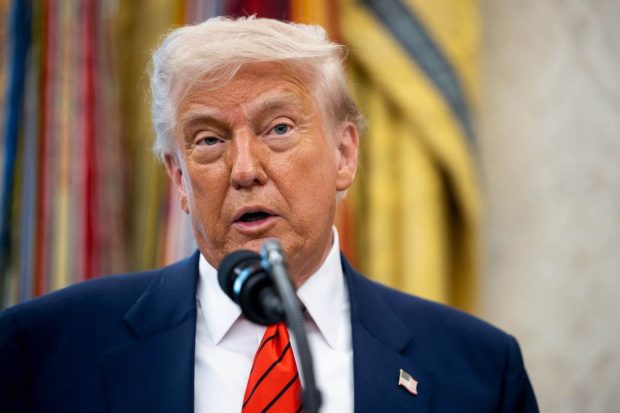
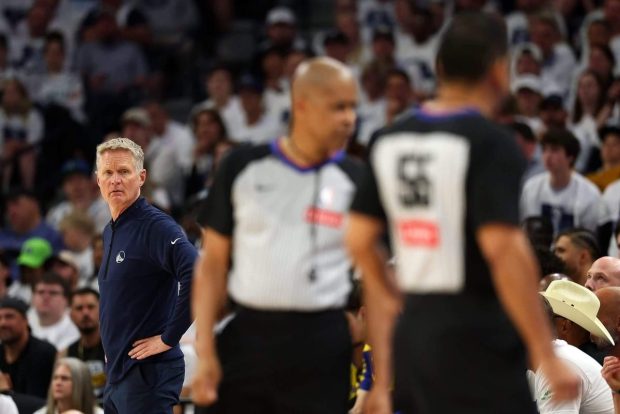
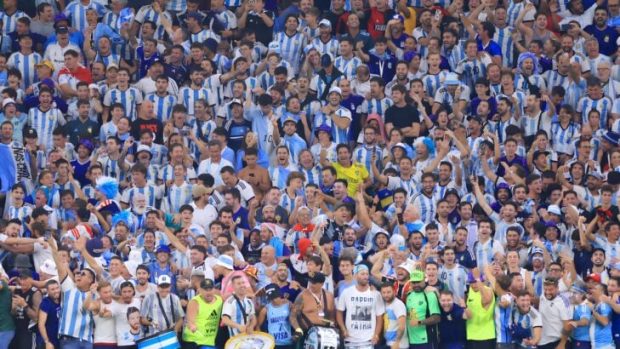
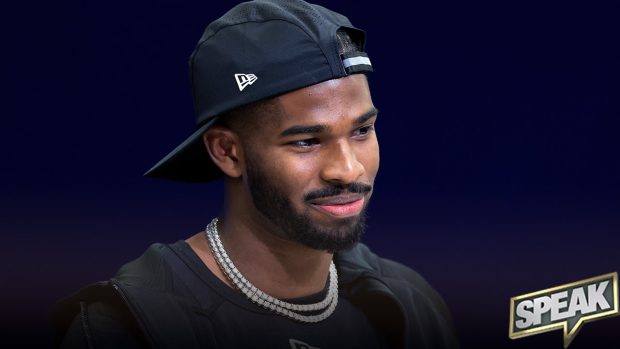

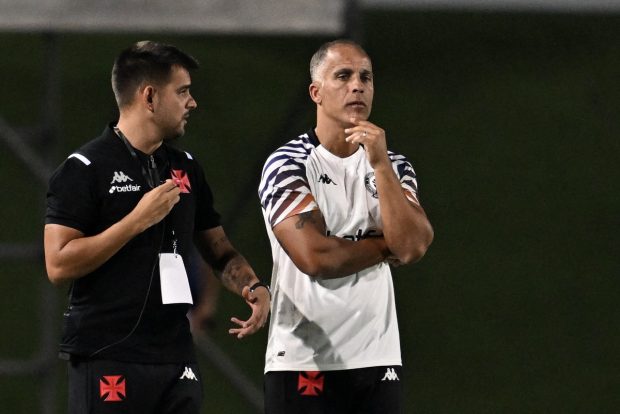
Be the first to leave a comment